Stonehenge is probably the most famous megalithic monument on earth. Stonehenge is located on the Salisbury Plain in Wiltshire in Great Britain. The age of Stonehenge is estimated at 3000 BC. The outer boundary of Stonehenge is a earthwork bank, which lies about 30 meters outside the standing stones. Just inside the earthen bank is a ring of 56 pits, known as the Aubrey holes after their discoverer John Aubrey. The standing stones in the centre consist of the Sarsen Circle and the Bluestone Circle. The Sarsen Circle is about 30 meters in diameter, inside the circle was a horseshoe of five Sarsen Trilithons, each trilithon consisting of a pair of huge upright stones capped by a massive lintel. The Bluestone Circle stands inside the Sarsen Circle. The stones of the Bluestone Circle weigh up to 4 tons each. The stones of Sarsen Trilithons weighing up to 45 tons. Stonehenge is surrounded by mystery. The original purpose of Stonehenge is still unclear. Today, Stonehenge is believed to have been built as an astronomical observatory for marking the summer and the winter solstices. Stonehenge is part of the UNESCO World Heritage Site: Stonehenge, Avebury and Associated Sites. Stonehenge, Avebury and Associated Sites, such as Silbury Hill and West Kennet Avenue, gained status as a UNESCO World Heritage in 1986. World Heritage Art: Mysterious Stonehenge and Stonehenge and Stone Circle
www.werelderfgoedfotos.nl © Copyright World Heritage Photos Classic Car Road Trip
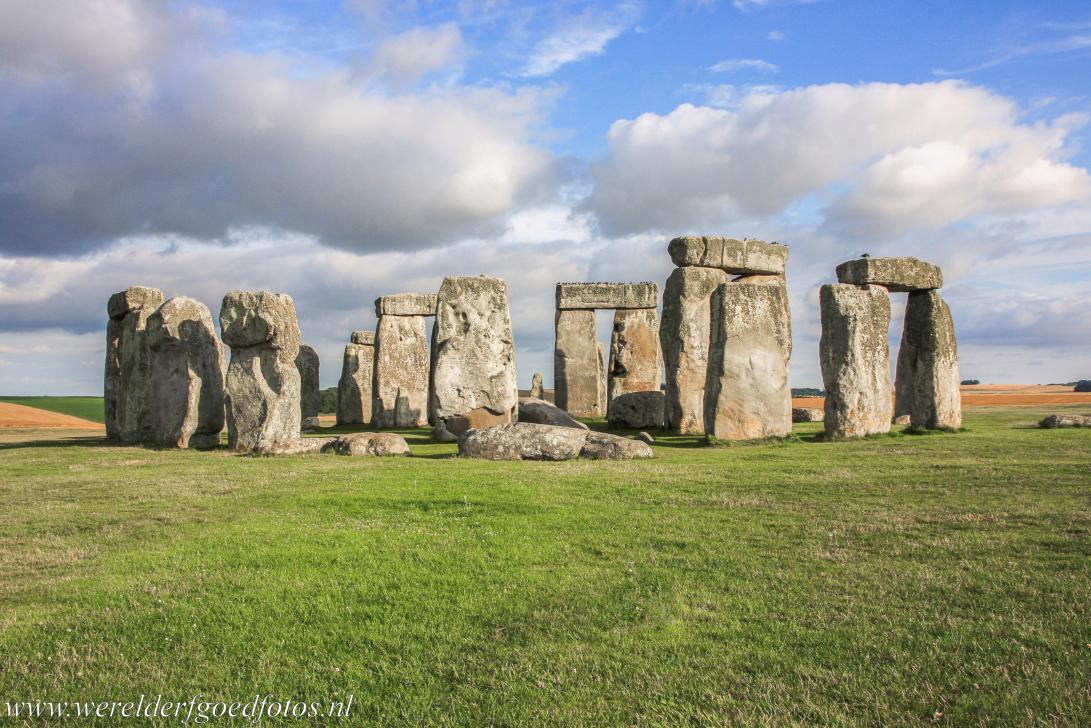
Stonehenge is probably the most famous megalithic monument on earth. The question of who built Stonehenge is unanswered even today. The oldest part of Stonehenge was erected in 3000 BC. Stonehenge was built in several stages, the final stage was around 1500 BC. Stonehenge is the most renowned part of the World Heritage Site: Stonehenge, Avebury and Associated Sites.

Stonehenge is probably the most famous megalithic monument on earth. The question of who built Stonehenge is unanswered even today. The oldest part of Stonehenge was erected in 3000 BC. Stonehenge was built in several stages, the final stage was around 1500 BC. Stonehenge is the most renowned part of the World Heritage Site: Stonehenge, Avebury and Associated Sites.
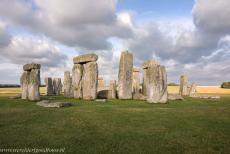
The standing stones in the middle of Stonehenge consist of the Sarsen Circle and the Bluestone Circle. The Sarsen Circle is about 30 metres in diameter, inside the circle was a horseshoe of five Sarsen Trilithons, each trilithon consisting of a pair of huge upright stones capped by a massive lintel. The Bluestone Circle stands inside the Sarsen Circle.
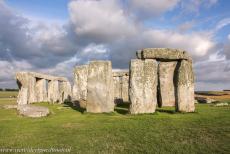
Stonehenge: The stones of the Bluestone Circle, the inner stone circle, weigh up to 4 tons each. The huge stones of the Bluestone Circle are of several kinds of blue-coloured rock, fetched by the prehistoric workers from South West Wales. The giant stones of the Sarsen Circle, the outer stone circle, weigh as much as 45 tons each.
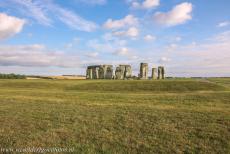
Stonehenge, Avebury and Associated Sites: The outer boundary of Stonehenge is a low circular earthwork bank, which lies about 30 metres outside the standing stones. Just inside the earthen bank is a ring of 56 chalk pits, known as the Aubrey Holes, named after their discoverer, the 17th century antiquarian John Aubrey. The earthen bank was built around 3100 BC.
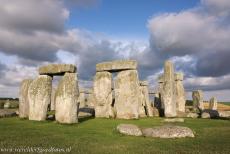
The Sarsen Trilithons of Stonehenge, each trilithon consists of a pair of gigantic standing stones capped by a massive horizontal lintel, each stone weighing up to 45 tons. The standing stones of the Bluestone Circle, weighing up to 4 tons each, came probably from Wales. It is unknown how prehistoric people transported the stones from Wales to the Salisbury Plain, about 225 km.
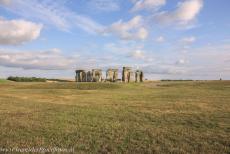
Stonehenge: The original purpose of Stonehenge is still unclear. It seems to have been built as an astronomical observatory for marking the summer and winter solstices. There are more than a thousand prehistoric stone circles in Great Britain, Stonehenge is without any doubt the most famous of them all.
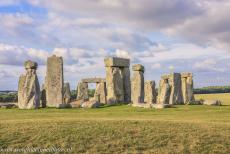
Stonehenge: The Altar Stone is a central megalith, a block of sandstone about five metres long. The stone is thought to have originally stood as a single monolith. The Altar Stone lies beneath the stones of the great Sarsen Trilithon. The largest stone of the Sarsen Trilithons is about nine metres high and has a weight of more than forty-five tons.
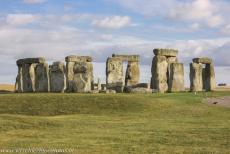
The prehistoric stone circle of Stonehenge is surrounded by earthworks, consisting of a circular bank and ditch. The megalithic monument is located on the Salisbury Plain, a large chalk plateau in the southern part of England. Stonehenge, Avebury and Associated Sites gained the status as a UNESCO World Heritage in 1986.
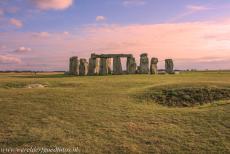
Stonehenge: On the right side one of the Aubrey Holes, on the left side the Slaughter Stone. The stone originally stood upright and together with a similar stone, now disappeared, formed a doorway to the standing stones. Originally thought to be used for ritual sacrifice, it is now know that the red staining on the Slaughter Stone is due to rain reacting with the iron ore in the stone.
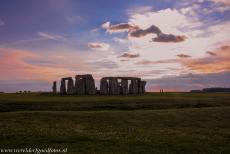
Stonehenge is surrounded by mystery. It is probably the most prominent megalithic monument on earth. In 2003, the Stonehenge Riverside Project found out that Stonehenge was built earlier and probably built to unify the tribes of Britain. Stonehenge, Avebury and Associated Sites were inscribed on the UNESCO World Heritage List in 1986.
